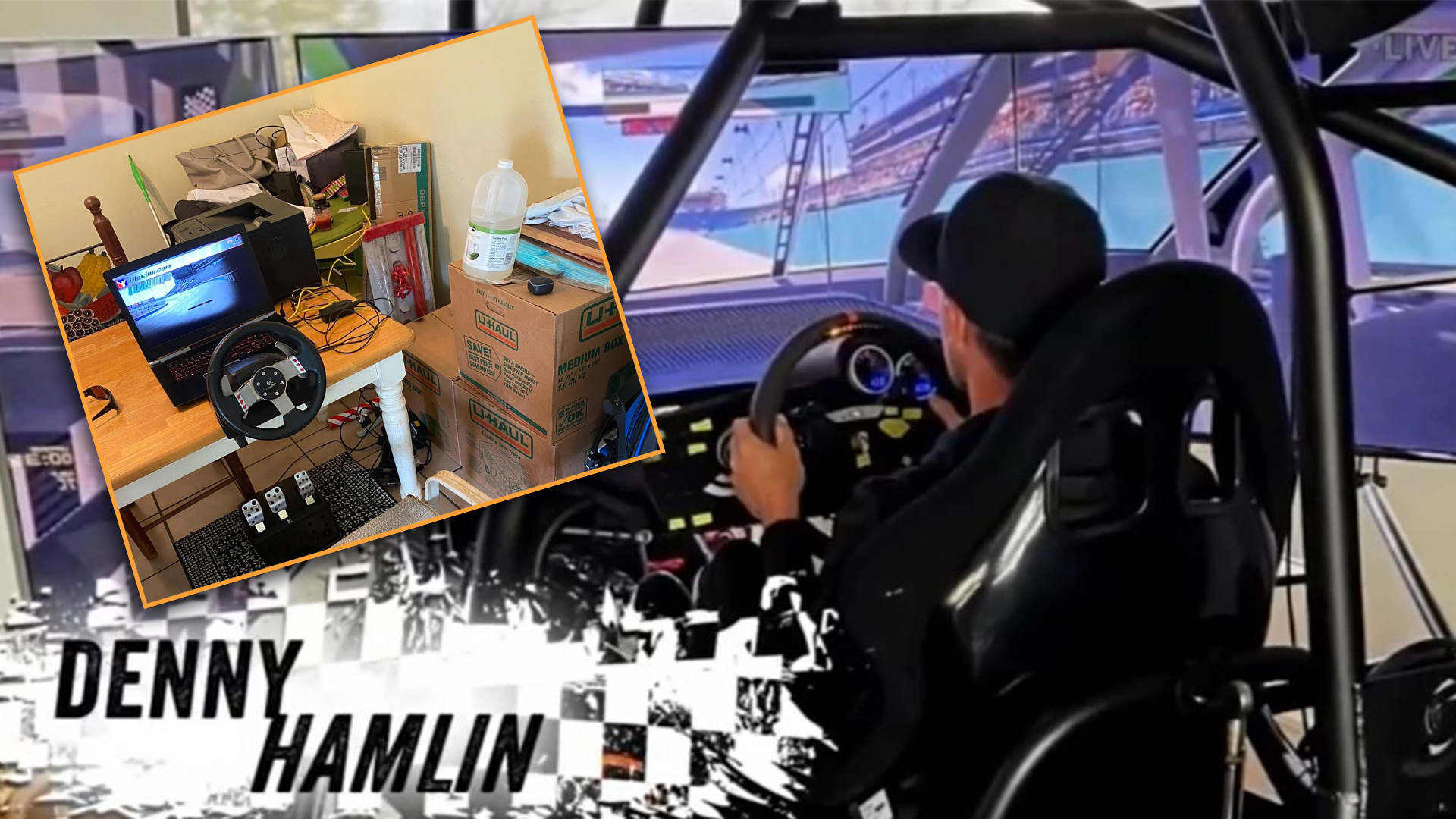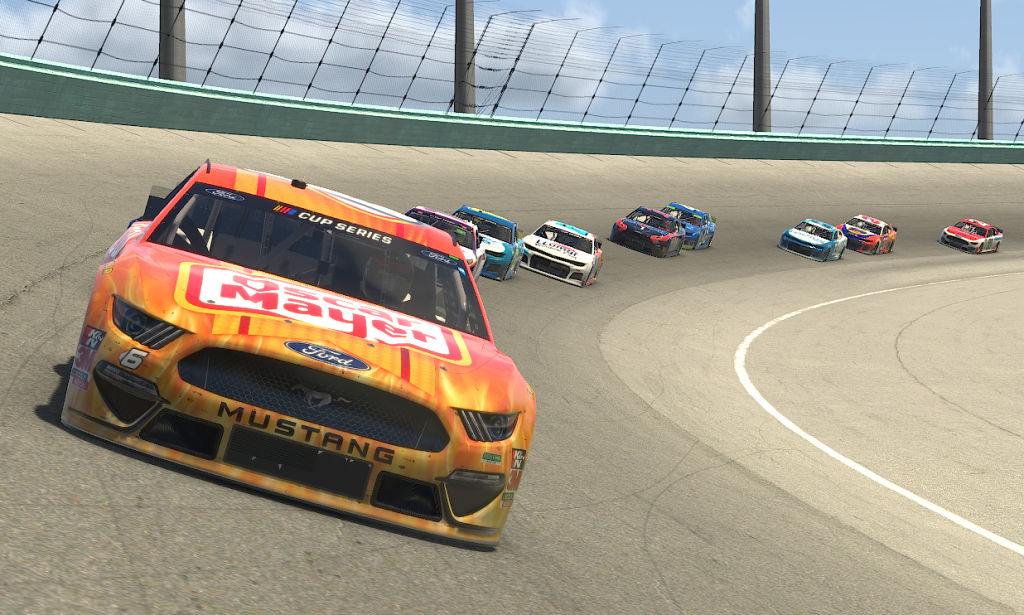

The popularity of sim racing has skyrocketed amidst these drab times of self-isolation and canceled plans. Whereas we should be watching professional hot-shoes go door-to-door IRL, we’re left to spectate as they take on one another aboard a common server, many behind the wheel of their high-dollar, full-motion rigs. There are a few drivers who take a simpler approach to this online-only competition, though, like NASCAR journeyman Ross Chastain.
His rivals might be contesting the eNASCAR iRacing Pro Invitational series in their complex simulators, but the 27-year-old needs little more than a laptop, Logitech wheel and pedals, and a white patio chair to remain competitive.

Since Ryan Newman’s horrific Daytona 500 crash, Chastain has filled in at Roush Fenway Racing driving the No. 6 Ford Mustang Cup car. Then, when he’s not on-call for Chip Ganassi Racing at the top level or Kaulig Racing in the NASCAR Xfinity Series, he’s moonlighting in NASCAR trucks. All in all, his schedule is jam-packed and that’s why he’s been nicknamed “NASCAR’s Busiest Driver”—as you’d expect, that doesn’t leave much time to spend on a full-blown simulator.
A cheeky tweet following Sunday’s digital race at Texas made light of Chastain’s humble setup. With only the equipment you see above, he placed higher than three-time Daytona 500 winner Denny Hamlin in his multi-screen, full-submersion contraption. Of course, that’s not to say that five-figure simulators are a waste—it only means that, given the uncertainty of racing on any given afternoon, the right driver can wheel it on a relatively normal budget.
We talked with Chastain about his admittedly vanilla office for last Sunday’s iRacing round, and there’s no hiding—it’s pretty basic. He explained to The Drive that he didn’t have another monitor handy, so he had to use a teensy Acer that also lacked vital components like a high-performance CPU and powerful graphics card. As a result, the sim program ran in super-low res that essentially omitted all color; not ideal given the crisp-and-clear views that his competitors enjoyed.
With his team’s headquarters shut down and no access to their simulator thanks to coronavirus, Chastain has been staying sharp at his family’s watermelon farm in Florida. He’s certainly no stranger to iRacing—he explained how he raced daily on the sim for several years leading up to his full-time NASCAR gig. Still, these days are different as each driver throws their hat in the ring and tweaks their sim skills to stay on top of the game.
Chastain noted that other drivers understandably have the leg-up, especially since they have full peripheral views and can see where the car is on-track at all times. Additionally, the ability to feel each bump in the surface and groove of the oval gives them better awareness that’s key to car placement. Despite that, he placed ahead of 10 cars running at the finish line during last weekend’s O’Reilly Auto Parts 125.
It’s difficult to peg an exact dollar amount for Chastain’s equipment since it’s all either used or borrowed, but it’s safe to say it’s nowhere near that of some others. For example, it’s estimated that Hamlin’s SimCraft system cost around $50,000—Chastain’s probably clocks in at $2,000 give or take, and that price could be slashed even more if you were to find some secondhand gear. A Logitech G27 wheel and pedals can be found on eBay for $750, and a laptop of the same caliber is likely to cost around a grand.
Alas, Chastain isn’t the only one out there racing on a budget. Timmy Hill, who won Sunday’s 125-lap Pro Invitational round, utilized a similar rig although he had a dedicated PC and an ever-so-slightly larger monitor. From one series to the next, whether it be NASCAR’s officially sanctioned league or the IndyCar iRacing Challenge, drivers are bringing varying levels of experience—and equipment—to the table. Just know that talent, and maybe a bit of luck, are the ultimate equalizers.
Got a tip? Send us a note: tips@thedrive.com